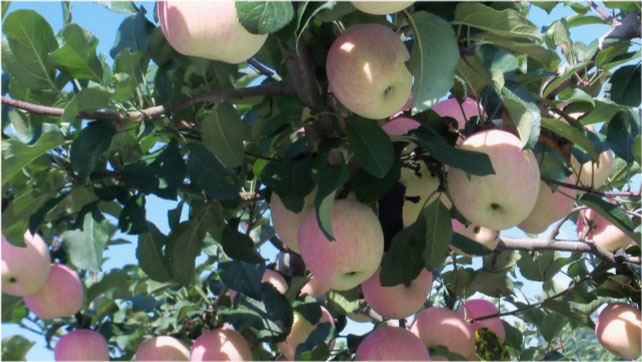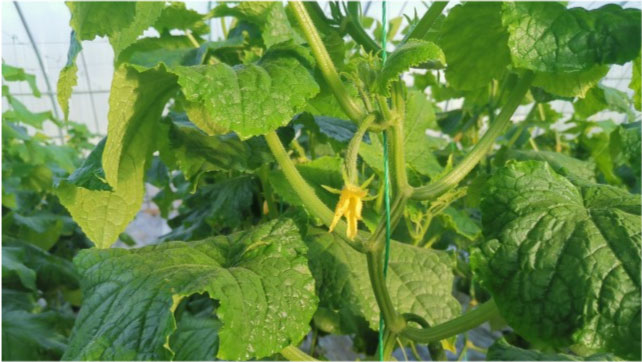Deep learning about the advantages and disadvantages of chemical fertilizer, organic fertilizer, and bacterial fertilizer
VIEWS: times Release Date:2021-02-25
The use of chemical fertilizers, organic fertilizers and bacterial fertilizers in agricultural production is quite common, especially for cash crops. These three kinds of fertilizers are used in a very large amount. Scientific understanding, choosing products that suit you, and using fertilizers scientifically, can truly bring the fertilizer effect into full play.

【fertilizer】
Chemical fertilizers include our common urea, ammonium bicarbonate, superphosphate, and compound fertilizers. They are a large category of fertilizers used to grow any crop.
Advantages: high content of elemental elements, quick effect after use, has a direct effect on increasing production, and is usually used as a base fertilizer;
Disadvantages: The nutrient is relatively single and cannot play the role of comprehensive nutrition. Usually, it needs to be used in conjunction with other fertilizers during use; it is easily volatile and leaching due to rain and temperature, and the crop utilization rate is relatively low ; If it is not used in accordance with the scientific method, it is very easy to cause the decline of soil quality, such as compaction and salinization, and even negatively affect the growth of crops.
【Organic Fertilizer】
Organic fertilizer is a general term for fertilizers with high organic matter content. It mainly includes human and poultry excrement, green manure, crop stalks, firewood, fallen leaves, biogas fertilizer, etc. The commercial organic fertilizers we buy from agricultural resources stores also belong to this class.
Advantages: rich in organic matter, including humus and various nutrients necessary for plant vegetative growth and reproductive growth. Organic fertilizer effectively participates in soil regulation and improvement, reduces the content of heavy metals, improves soil permeability, enhances soil fertility and water retention, adjusts soil pH to be more conducive to crop growth, promotes soil microbial activities, and fully improves soil microenvironment.
Disadvantages: Its nutrient concentration is low, and the content of various basic elements required for crop growth is low. It does not have a prominent effect on the growth of crops, so the effect on increasing yield is not obvious.
【Bacterial fertilizer】
Bacterial fertilizer, the image is "bacteria + fertilizer", not only contains "organic matter, nitrogen, phosphorus, potassium" and other nutrients necessary for crop growth and a large number of elements, at the same time the product also contains a large number of beneficial microorganisms. Biological fertilizer,
Advantages: increase the amount of soil biological bacteria, activate the soil, and increase the utilization of soil nutrients; it can improve certain fixed nutrient elements in the soil to the direction that is conducive to crop absorption, stimulate the growth and absorption of roots, and can also reduce the corresponding nutrient elements Fertilization amount.
Disadvantages: Can not provide medium and trace elements of crops for a long time. Because the bacterial fertilizer is made of living bacteria, avoid direct sunlight, and cannot be mixed with pesticides. The application conditions are relatively harsh (soil temperature, humidity, pH, organic matter content).
The advantages and disadvantages of these three categories are very obvious. We can draw a conclusion: only by using them in a reasonable combination, starting with the provision of nutrient elements and the regulation of the soil, can they not suffer losses and achieve a real increase in production.
So, how to use it reasonably?

a. Chemical fertilizer takes effect quickly. When used as a base fertilizer, it needs to be applied to the field about a week in advance; if it is used as a topdressing, it should be applied before the critical period of crop nutrition or the peak period of nutrient absorption. This period can be when the absorption of nutrients reaches the maximum. The absorption rate is the highest.

b. Organic matter + bacterial fertilizer. Organic fertilizer can provide sufficient nutrients for beneficial bacteria. The beneficial microorganisms in turn promote the fermentation of organic fertilizer and completely decompose and release nutrients. The two are combined with fertilization, complement each other, and use each other, which can not only improve the soil microenvironment, increase the permeability and water retention of the soil, but also enhance the absorption capacity of the root system and increase the fertilizer utilization rate, thereby reducing the use of chemical fertilizers and improving The resistance of crops to adverse environments (low temperature, drought, disease, and acid-base imbalance).
c. With the increase of organic matter, the various metabolic effects of crops have been strengthened, and the development of roots, the robustness of stalks and the content of leaf chlorophyll will be correspondingly increased; at the same time, the ineffective phosphorus and potassium remaining in the soil can It is improved into effective phosphorus and effective potassium, which can be used by crops to improve fertilizer efficiency and reduce costs.
Previous : Microbial fertilizer-a "weapon" to improve soil
Next : What are the advantages of bio-organic fertilizer compared with other fertilizers?
Latest News
- The company overcame difficulties and won a "good start" in the first quarter ...2022-03-28
- Safe Production ...2022-03-28
- first-line collection ...2022-03-26
- Huaqiang News ...2022-03-26
- Huaqiang Chemical Strong Agriculture Project ...2022-03-25
- huaqiang news ...2022-03-24
- winning unit ...2022-03-22
- Huaqiang News ...2022-03-21
Related Information
- The best fertilizers for fruits and crops ...2020-05-26
- Huaqiang Chemical Group NPK fertilizer pdf ...2020-04-01
- Humic Acid Fertilizer ...2019-12-31
- Bulk Blending Fertilizer ...2019-12-27
- Water Soluble Fertilizer ...2019-12-08
- NPK Fertilizer ...2019-12-02
- Potassium Sulfate Fertilizer ...2019-11-30
- Urea Fertilizer ...2019-11-21
MESSAGE
Our sales staff will be the first time to get in touch with you,to provide you with the latest price.
-
Chemical Products
-
Compound fertilizer
-
Contact Us
Huaqiang Chemical Group Stock Co.,Ltd.
No.1 Jinping Avenue, Dangyang , Hubei , China
Http://www.hq-chemical.com
info@hq-chemical.com
Tel:+86 717 3431866
Mobile: +86 18627120543
© Copyright 2021 Huaqiang Chemical Group Stock Co.,Ltd. All Rights Reserved



